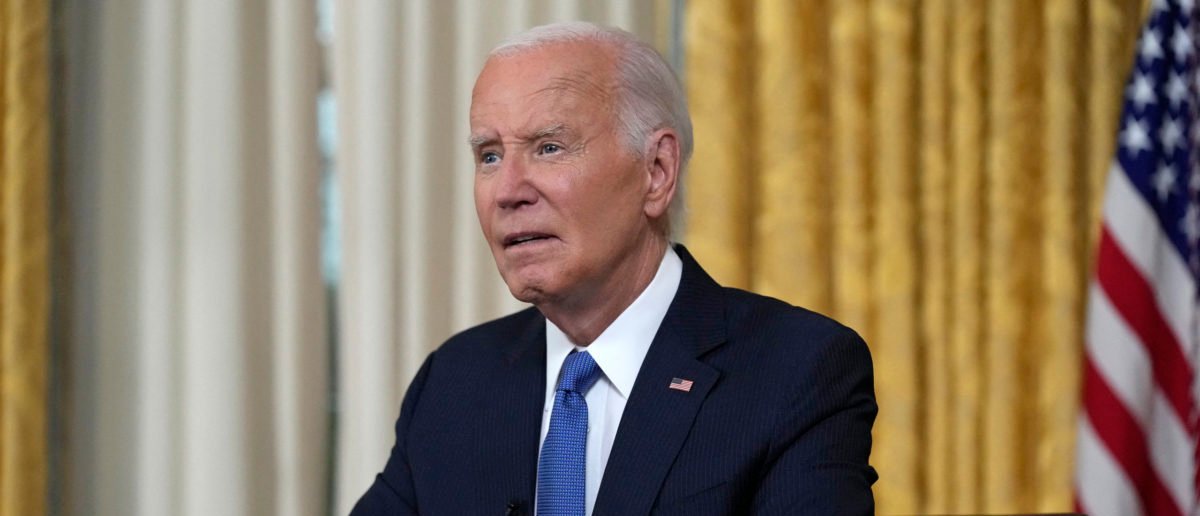In a July 24 address from the Oval Office, President Joe Biden claimed the racial wealth gap is “the lowest it’s been in 20 years.”
Verdict: Unsubstantiated
Experts offered differing perspectives on Biden’s claim, with one labeling it as “accurate” and another indicating the answer varies based on which measure is being used, namely, the ratio of median white to black wealth versus the wealth gap in dollars.
Fact Check:
Biden said he decided to end his 2024 presidential campaign and endorsed Vice President Kamala Harris to become the Democratic nominee “in the defense of democracy,” during his Oval Office address, according to NBC News.
During his July 24 address, Biden claimed the racial wealth gap is “the lowest it’s been in 20 years.” Investopedia defines the racial wealth gap as “the difference in assets owned by different racial or ethnic groups, this gap results from a range of economic factors that affect the overall economic well-being of these different groups. The term reflects disparities in access to opportunities, means of support, and resources.”
The claim is unsubstantiated. According to the Federal Reserve Bank’s Survey of Consumer Finances data from 1989 to 2022, white, non-Hispanic households’ median net worth was $284.31 in 2022, while black, non-Hispanic households’ median net worth for the same year was $44.10. In 2019, white, non-Hispanic households’ median net worth was $219.21 compared to black, non-Hispanic households’ median net worth of $27.94.
Similarly, the same data shows white, non-Hispanic households’ mean net worth was $1361.81 in 2022, while black, non-Hispanic households’ mean net worth for the same year was $211.60. In 2019, white, non-Hispanic households’ mean net worth was $1136.66 compared to black, non-hispanic households’ mean net worth of $164.99. The median and mean net worth is measured in thousands of dollars.
Spokespersons for the liberal Center for American Progress and the liberal Urban Institute, as well as Dr. Jeremy Horpedahl, an economics professor at the University of Central Arkansas, directed Check Your Fact to the data.
In addition, a review of the Federal Reserve’s Survey of Consumer Finances data for 2022 shows that although wealth among black families increased 61% between 2019 and 2022, absolute dollar-value differences in wealth between white families and black and Hispanic families “grew in 2022” as black and Hispanic families “had less wealth in 2019.”
In terms of specific numbers, median wealth gaps between both white and black families and white and Hispanic families “increased by around $50,000 between 2019 and 2022, with each gap reaching over $220,000 in 2022,” according to the same review.
An accessible version of the same figure shows the median wealth for white households versus black households from 1989 to 2022. In 1989, the median wealth for white households was 164.03 compared to 9.20 for black households. In 2001, the median wealth for white households was 205.53 compared to 32.45 for black households.
The same figure indicates the median wealth for white households was 180.68 in 2013, compared to 16.78 for black households the same year. Finally, the median wealth for white households in 2022 was 285.01 compared to 44.89 for black households.
Check Your Fact divided the median wealth for white households compared to black households and obtained the following numbers: 17.8293478 (1989), 6.33374422 (2001), 10.7675805 (2013), and 6.34907552 (2022). Looking at these numbers, the difference in wealth among white and black families appears to be the lowest it has been since 2001. (RELATED: Fact-Checking Biden’s Claim About Trump’s Response To Charlottesville)
Both a spokesperson for the Urban Institute and a White House spokesperson directed Check Your Fact to the review of the Fed’s data.
Likewise, an April 2024 article citing data from the U.S. Census Bureau’s Survey of Income and Program Participation (SIPP) indicates that in 2021, “households with a white, non-Hispanic householder had 10 times more wealth than those with a black householder.” According to the same survey, black householders’ median wealth in 2021 was $24,520, or one-tenth of the median wealth of white householders at $250,400.
Black householders accounted for 13.6% of all U.S. households in 2021 and held 4.7% of all wealth, while their white counterparts comprised 65.3% of all U.S. households and held 80.0% of all wealth in the same year. According to the same article, which is published via the U.S. Census Bureau’s website, black householders may be Hispanic or non-Hispanic, while white householders “is used to describe non-Hispanic white householders.”
Both the National Community Reinvestment Coalition and the center-left Brookings Institution noted the racial wealth gap has persisted despite increasing black wealth in 2024.
Experts shared their perspectives with Check Your Fact.
Horpedahl told Check Your Fact in an email that there are “two ways” to look at the racial wealth gap.
“There are two ways to look at the racial wealth gap, one supports Biden’s statement, the other contradicts it,” Horpedahl explained via email. “If you look at the ratio of median white to black wealth, it was 6.4-to-1 in 2022, which was the lowest since 2001 (and the second lowest year in the survey, which goes back to 1989, with only 1998 being slightly lower at 6.2-to-1).”
“If instead we look at the wealth gap in dollars, the median white family had $240,000 more than the median black family — that’s the highest gap in this survey (going back to 1989). I think in general the ratio is the better measure to use, and is the one that Biden was using, but it’s important to note the dollar difference too,” he said.
“The white median was last about 6 times the black median in 2001. In 2022, the Hispanic median net worth is 4.6 times the White median. This is the lowest ratio for the Hispanic population in the dataset. Based on these data, I consider President Biden’s statement to be accurate,” he added.
